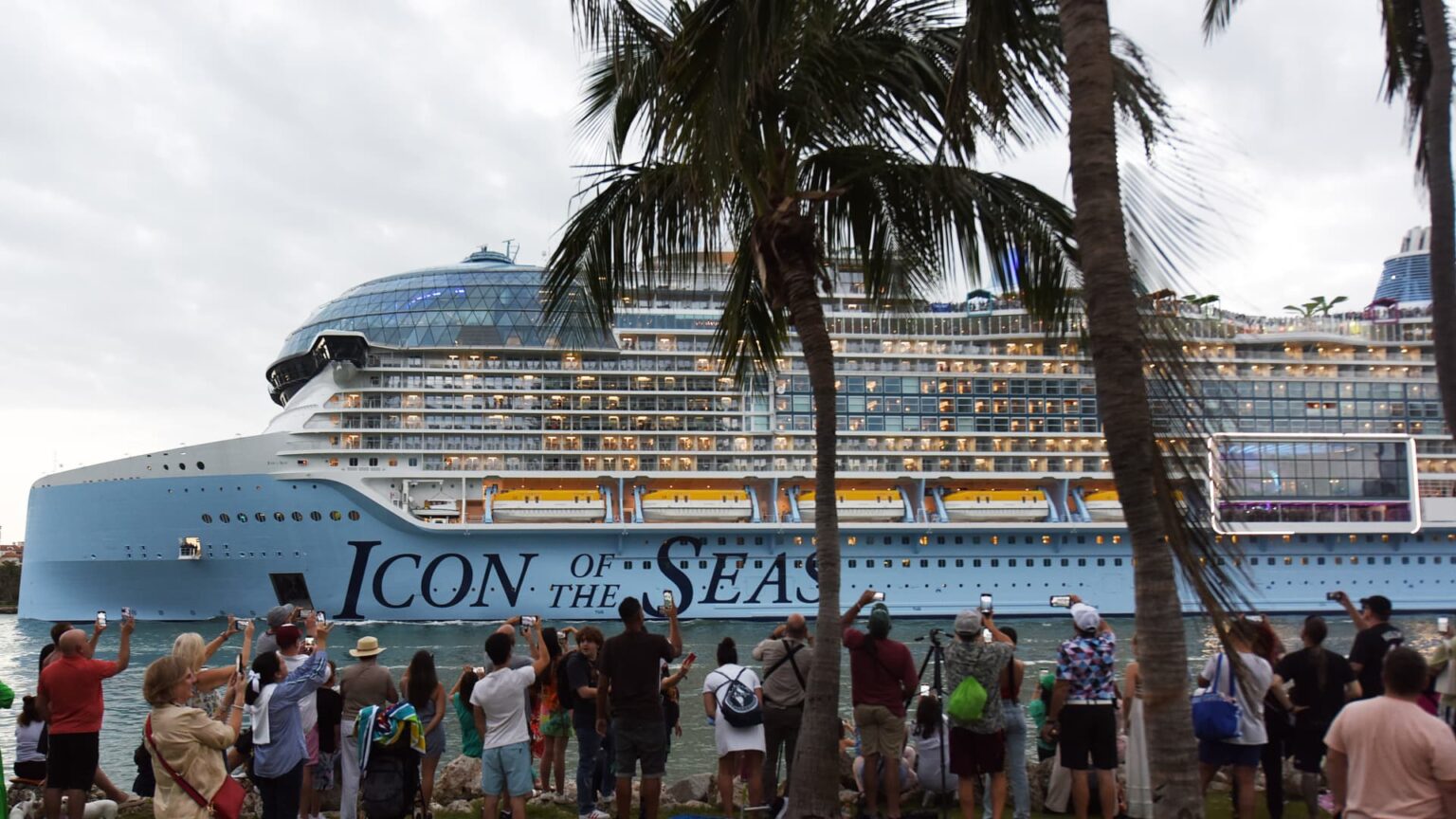
With consumers getting more selective on how and where they vacation, cruise lines are fighting for Americans’ tourist budgets. Royal Caribbean thinks shortening trips and packing the days with activities and exclusive opportunities will keep customers hooked.
“I think we are an experience-driven mindset,” Royal Caribbean CEO Jason Liberty told CNBC’s “Squawk on the Street” this week. “Over half of our guests are actually millennials or younger, and when you survey those guests, about 42% of them say in the next 12 months their plans are to actually go on shorter vacation experiences.”
Onboard Royal’s Utopia of the Seas, the world’s second-largest ship with a maximum capacity of nearly 5,800 passengers, customers are welcomed to 13 pools, 21 dining options, two casinos, and much more. This is the second cruise ship Royal Caribbean is bringing to market in the span of six months. Liberty says the voracious appetite to cruise post-pandemic has not died down.
“We’re not seeing any pullback from the consumer, whether that’s planning their vacation experiences further out … [or] then on the ships, they go out and they continue to spend,” Liberty said. “There is not an area on the ship that we’ve seen a change in their spending behavior.”
To scale its business and widen its appeal, Royal Caribbean is looking at how to better compete with other types of vacations customers opt for, like skiing, casinos or theme parks.
“When we look at what our guests are doing when they’re not with us, they’re going to Orlando, they’re going to Vegas, they’re going to all-inclusive resorts,” Liberty said. “What we’re trying to do is make sure that our experience, whether on the ship or at our private islands, is something that is highly competitive with land-based vacation.”
Morningstar travel and leisure analyst Jamie Katz thinks Liberty’s strategy to get the Disney theme park traveler on board is working.
“The American traveler doesn’t always have time to take a six- to eight-day cruise due to work schedules and kids’ school calendars,” Katz said. “A three-day cruise provides customers with more options.”
Expansion plans
One of the benefits of bringing a new ship to market — you’re able to charge more.
“You’re really seeing sizable pricing premiums. Historically, pricing of a new ship is a 20% premium to existing ships across the industry,” said Patrick Scholes, travel and leisure analyst at Truist Securities.
Scholes said the Utopia price bump for Royal Caribbean could be even higher.
Liberty said he expects higher pricing to hold into the second half of the year, pointing to the “value gap” between cruises and land-based vacations.
Rival Carnival, too, has raised prices amid strong demand.
“We haven’t seen that sign of a consumer slowdown, if anything, we are seeing an acceleration,” CEO Josh Weinstein told CNBC after the company’s most recent earnings report in mid-June.
Analysts point out that cruising is one of the few areas within the travel and hospitality sector where prices continue to sharply rise. Last week, Delta Air Lines revealed softer prices compared with last year. HSBC analysts expect airfares to stay flat or decline in 2024 over 2023.
Several analysts and investors will be sailing aboard Utopia this week to better understand what differentiates the cruise ship from its competitors.
One area of interest will be the impact of cutting-edge technologies: Liberty said artificial intelligence is helping Utopia reduce food waste by 30% to 40%. The company is also using AI to help with dynamic pricing and smart management of customer data.
Beyond Utopia, there aren’t too many ships coming online from the cruise giants.
Royal Caribbean currently has the strongest order book in the industry. The company’s Icon of the Seas, the biggest cruise ship in the world with a capacity of 7,600 passengers, made a splash earlier this year.
On Royal Caribbean’s recent earnings call, executives said Icon bookings are holding strong through 2025.
“We’re entering a two- to three-year period where there are minimal number of ships coming online. Typically, the industry grows supply by 5% to 7% ever year,” Scholes said.
But building a massive cruise ship requires extensive work. Wall Street analysts estimate it takes three to five years to order and get a ship delivered.
Norwegian Cruise Line is working on bringing eight new ships to market in the next six years.
Viking Cruises, which went public earlier this year and has seen its stock trade well above its debut price, is bringing three new ocean cruise ships to market over the course of the next three years, not including its river-based ships.


